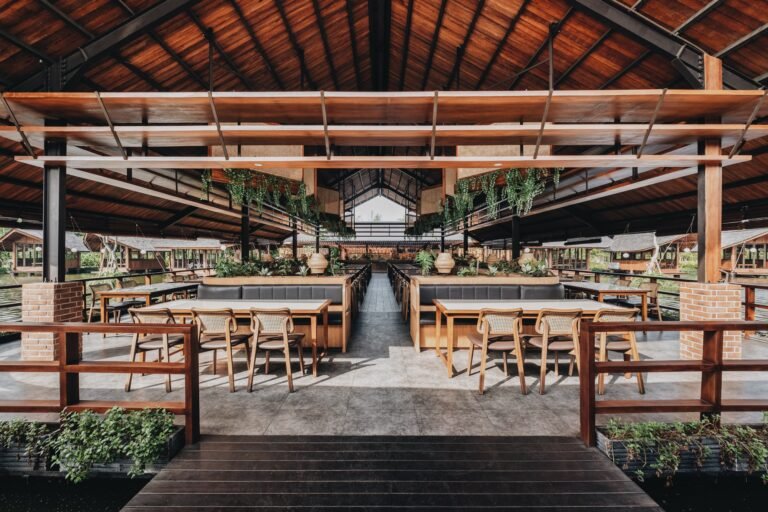Why We Should Create Cities for Children
Why We Should Create Cities for Children

In the book Design of Childhood, architect and researcher Alexandra Lange states that children were considered nonpersons throughout almost the entire history of ancient and modern architecture, being excluded from the process of creating urban and interior spaces. This process has caused and is still causing several problems when children reach adulthood, since these children grew up being constantly watched by fear of movement and the eyes of adults.
A recent report by Arup, a consultancy in planning and engineering, identified five challenges for urban children: traffic and pollution; skyscrapers and urban sprawl; crime, social fears and aversion to risk; isolation and intolerance; and inadequate and uneven access to the city.

But child-friendly design is gaining traction in urban neighborhoods around the world: from community-led projects using paints and vases to face dangerous routes to schools and playgrounds, to citywide policies reimagining housing policies and neighborhoods for kids.
Limited Childhood
Consider what it takes for a child to become an adult. We come into our lives in a state of total dependence on mature people. The journey from the first to the last should be one of independence in gradual expansion. Parents should not only provide experiences for their children, guiding them between school, play and soccer practice; they should let their children explore and discover experiences for themselves. But modern childhood throughout the world is increasingly limited.
Tim Gill, author of “Urban Playground: How Child-Friendly Planning and Design Can Save Cities” cites as evidence a map depicting the displacements of children over four generations of a family in Sheffield, England. In 1919, at age 8, his great-grandfather was able to roam to a fishing pond that was ten kilometers from his home. In 2007, his 8-year-old great-grandson was only able to walk to the end of the street – and that’s more freedom than many 8-year-olds have these days.
Human habitats shape children in ways we don’t appreciate. — Tim Gill
Gill first became interested in child-friendly urban design in 1994. That’s when he started working for the Children’s Play Council – now called Play England – and began to realize how deeply the city’s infrastructure can disrupt childhood.
It’s tempting to blame the highly guarded nature of modern childhood on parents who are too neurotic to let their children out of their sight. But according to Gill, children’s gradual blocking is in part a reflection of the built environment they occupy. In his opinion, it is wrong to blame parents for not letting their children out when it is not safe to do so.

The challenges of raising children in a city are not limited to physical risks. According to Hannah Wright, an urban designer who studies design for children, the vast majority of public space was simply not built with children in mind. During the rapid urbanization of the 20th century, many cities were designed for the people who built them: healthy men who were not the ones who took care of the children.
This created all kinds of persistent obstacles for children and their caregivers: think of subway platforms accessible only if you walk down a flight of stairs – not easy with a stroller – or bus routes that make no sense for someone dropping their kids off at school on their way to work.
Children and Cities
In her book, Lange cited ways to improve the lives of families in the city: reducing the speed of cars, creating narrow streets, and adding more trees. Placing family-friendly locations close together would help create easy routes between them – and could allow them to feed on each other. If kids can safely run around on a nearby playground while their parents take an aerobics class at the community center, for example, there’s no need to hire a babysitter.
In Gill’s view, the ideal city for children would be something like Vauban, a district of Freiburg, Germany. Few of its 5,000 residents own a car, and those that do must park it in a parking lot on the outskirts of town. A tram and a dense network of cycling and walking paths cross the neighborhood.

The multifamily housing leaves plenty of space for recreation and socializing. And with little traffic, parents don’t have to keep their kids in closed playgrounds. Instead, playful structures such as swings and slides are scattered throughout the city, allowing children to mingle with their fellow city dwellers.
Of course, demolishing existing cities and building new ones for children in their place is not feasible. But urban designers have many ways to work with what they have. Gill suggests evaluating individual neighborhoods for children – are there many places for children to go? Can they safely reach them? – and make changes accordingly.
Cities can pilot interventions before implementing them more broadly. Rotterdam, a city about 80 kilometers southwest of Amsterdam, did just that. After a 2006 survey found it the worst place in the Netherlands to raise a child, the city launched Child Friendly Rotterdam; the intervention mainly focused on renovating a single neighbourhood, Oude Noorden, reconfiguring streets to decrease or discourage traffic and make public spaces more child-friendly.

How do we want to educate the adults of the future so that they consciously think about cities if they did not have this experience during childhood? Is it because we will not be children forever, we should just think about the world for adults?
If we can build a successful city for children, we will have a successful city for all. — Enrique Penalosa
If you are interested in developing works for children, get to know the “Educadores da Criação” and “Design para a Infância” niches in Guia Nichos do Futuro.
Via Tabulla.



